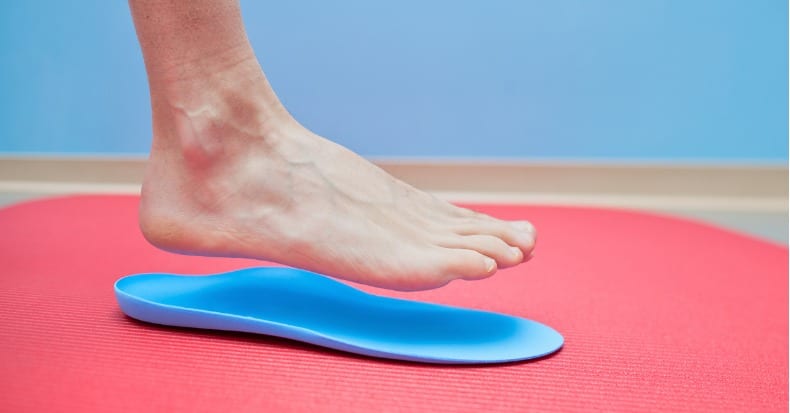Osteoarthritis (OA) is the leading cause of knee pain and disability in the elderly population. While treatment to address knee OA will often focus on the knee itself, a patient may also need to change their footwear. Why is that?
During normal walking, joint loading is NOT evenly distributed, and the distribution most often greatest on the medial (inner) side of the knee. This greater load can cause wear and tear over time and lead to thinning of the smooth, slippery cartilage surfaces on the medial side of the joint, which eventually leads to bone-on-bone contact, the end-stage of OA. By changing where joint loading occurs on the knee, it’s possible to slow this process and potentially delay or even prevent the need for a knee joint replacement.
This can be accomplished through either a change in footwear or adding an insole or orthotic to an existing shoe. On the footwear front, an OA patient may need to avoid clogs, barefoot shoes, high heels, and extra-rigid/stiff shoes. Rather, walking or running shoes or, for more formal occasions, a shoe with a shock-absorbing sole and padded collars that’s not too rigid may be a better choice. A well-trained employee at a specialty shoe store can help identify which shoes will work best for your situation.
One study investigated the use of lateral wedges both with and without custom arch supports for people with medial knee osteoarthritis (OA) and pronation (rolled in feet). Each of the 26 participants wore one or the other for two months and switched to the other option after a two-month “washout” or rest period. The researchers concluded that the lateral heel wedge WITH foot orthotic/arch supports provided the best benefit to the participants with respect to performance on a timed stair climb test. Another study found that adding a mobility shoe reduced medial joint loading to an even greater degree.
For the knee OA patient, chiropractic treatment may also include specific exercise training, weight management/nutrition, manual therapies, modality use (electrical stim, magnetic field, laser, ultrasound, and more), and the use of a knee brace—all in the effort to reduce pain and improve mobility.
